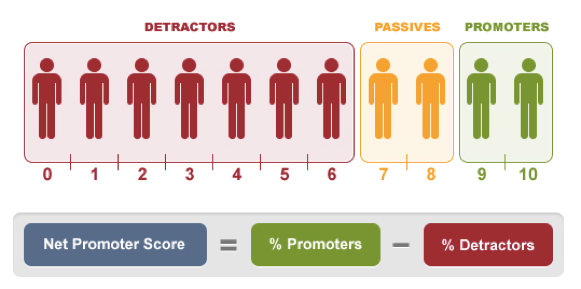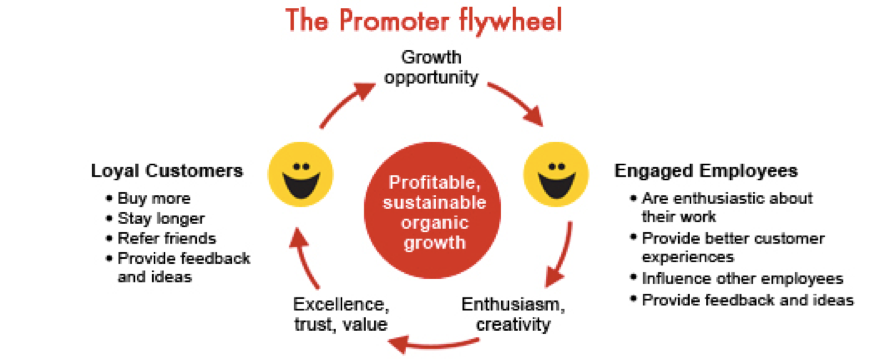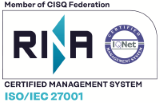More and more companies have come to understand that to grow profitably in competitive scenarios, satisfied customers are the key to success. And they know that employees have a fundamental role in achieving a better customer experience.
In this challenge to improve customer loyalty, companies must be able to listen to their customers and understand what they are saying. It is what we call the Voice of the Customer (VoC).
However, a mission — such as customer satisfaction — that lacks a precise measure of success (or failure) is just hot air. Quoting Lord Kelvin, “If you can not measure it, you can not improve it.”
The Net Promoter Score (NPS) has become, for a number of companies, the key metric for measuring customer satisfaction. By the same standard, the mission to get motivated and happy people in an organization also has its key metric: the eNPS (Employee NPS).
As discussed below, in order to improve customer and employee experience, both the NPS and the eNPS need to find the reason that justifies the score given.
When asked What is the primary reason for your score? the NPS and the eNPS collect and analyze the open answers of thousands of customers and employees. Here is where the linguistic technology of Meaning Cloud intervenes.
What is the Net Promoter Score and why is it important?
The Net Promoter Score, commonly known as NPS, is the most widespread metric to gauge customer loyalty about a brand, product, or service.
The Net Promoter Score is based on a single question: “Would you recommend this product or service to a family member or friend?”
It works on a scale from 0 to 10, where 0 means “very unlikely” and 10 “would recommend it for sure”.
According to the results, customers are classified into promoters, passives, and detractors:
– Promoters: between 9 and 10 points
– Passives: those who are between 7 and 8 points
– Detractors: those who give scores between 0 and 6 points

Source: http://www.summercampcoach.com/the-ultimate-question-part-2-how-to-calculate-your-nps-and-why-it-matters/
A positive NPS means that there are more people who recommend the product or service than people who are unhappy with it. A negative score reflects lower levels of satisfaction and loyalty to the brand.
Although the NPS is a registered trademark of Fred Reichheld, its use is free. This has undoubtedly contributed to its widespread adoption.
After testing for years various types of questionnaires in his work with customers, Reichheld found out that a precise question (Would you recommend…?) was the one with the highest correlation coefficient in its relationship with the sales of a product. In other words, loyal customers produce sustainable benefits for the company, they recommend us, and we call them “promoters”.
In his 10-year research, Reichheld found that in most industries, the companies with a higher proportion of promoters than detractors obtain better business results and show healthier growth rates. NPS leaders tend to grow twice as fast as their competitors do.
After publishing his book The Ultimate Question in 2006 (the link is to the second edition of 2011), hundreds of the world’s largest companies, including General Electric, Procter & Gamble, Telefonica, Apple, Allianz, JPMorgan Chase & Co, ING, and Microsoft have adopted the Net Promoter Score (NPS) as the primary metric for measuring customer satisfaction. They have found out that growth and profits are directly related to the conversion of customers into brand promoters.
Promoters, those who have had an extraordinary experience with our company, are more likely to behave as loyal customers, buy more and do it more often. They are also less price sensitive than passives or detractors.
In plain English: whenever the NPS goes up, benefits raise, when it goes down, we lose money. Moreover, this NPS-benefit correlation is so well established and proven that it is possible for companies that have delved into such metric to invest in customer loyalty, and at the same time be able to calculate the Return on that Investment.
In some companies, as well as they use financial reports to ensure that they and their team are meeting goals, managers also employ the Net Promoter Score to make sure they are complying with their objectives regarding Customer Experience.
To the key question (Would you recommend…?), companies usually add a second one that helps them understand the reasons for the answer: “What is the primary reason for your score?”
These customer-generated verbatims (free responses) are essential to understand what lies behind the score. It helps to identify problems and find strengths as well. Of course, when the volume of responses reaches thousands or millions, companies need to use text analytics tools such as MeaningCloud to extract the value hidden within those responses.
What is the eNPS (Employee NPS) and why is it important?
Companies that have already embarked on the mission of improving customer experience recognize that they cannot achieve their goal unless the frontline employees, the ones who are in direct contact with the customer, are enthusiastic about their company and do love their job.
They agree, therefore, that they need to encourage all members of the organization to take the necessary actions to produce more promoters and fewer detractors.
Companies that have made substantial improvements in customer experience have already started to apply the same methodology to measure and improve the employee experience. Although it is a less mature territory, they are finding in the eNPS (Employee Net Promoter Score) the same degree of correlation they discovered when correlating the NPS and the benefits of the company.
The Employee Net Promoter Score, often known as eNPS, is the key indicator to measure the employees’ loyalty towards their company.
The Employee Net Promoter Score is normally based on one question:
“Would you recommend this company as a place to work to a friend?”
The eNPS often features a second question: “Would you recommend this product or service (of your company) to a friend or relative?”
The rules for measuring the eNPS are the same as the ones applied for the NPS:
It is a scale from 0 to 10, where 0 means “very unlikely” and 10 “would recommend it for sure”.
According to the results, employees are classified into promoters, passives, and detractors.
And, of course, there is always an open question to justify the response: “What is the primary reason for your score?” Listening to the Voice of the Employee helps companies to understand the reasons behind each response. Again, if the volume of free-text responses reaches thousands or tens of thousands, we will certainly need a platform as Meaning Cloud to extract the value of those responses.
Employees with a mission
In addition to the well-proven economic correlation of the NPS, customer-centric organizations get an extra reward in the form of motivation for their employees.
Indeed, most people feel that their work is meaningful when they can positively impact the lives of their clients. The NPS helps them to know when they are succeeding (or not) in this important mission. And this closes our virtuous cycle: customers who have extraordinary experiences with a company energize employees, whose enthusiasm fuels a wonderful customer experience.

Source: http://www.summercampcoach.com/the-ultimate-question-part-2-how-to-calculate-your-nps-and-why-it-matters/
The main factor that makes a company an ideal place to work is precisely the frequency with which employees have the opportunity to be proud of the way they treat their customers and receive a well-deserved 9 or 10 score from them.
Human Resources empowered
And last, but not least, the correlation between happy employees and benefits is turning the HR departments of the companies that adopt the eNPS into more powerful divisions, since their work have a direct impact on the generation of revenue. The Human Resources department has to undertake the strategic mission of nurturing those happy employees that lead to customers-promoters, i.e. those who guarantee profits.
MeaningCloud can help extract insights from the employees’ feedback with People Analytics, a text analytics solution for human resources.
Text-based data sources are a key factor for any organization to understand the “whys”
Finding committed employees is one of public and private organizations’ top priorities. MeaningCloud can help extract insights from the employees’ feedback with People Analytics, a text analytics solution for human resources.
Listening to the Voice of the Employee (VoE) by systematically collecting, managing and acting on the employee feedback on a variety of valuable topics is essential. Since everyone wants to understand employees better, text-based data sources are a key factor for any organization to understand the “whys” and act on them to make improvements.



One thought on “Net Promoter Score (NPS) via Voice of the Customer (VoC)”
Good and accurate post Eduardo. I have been working on automating the analysis of open text responses to NPS surveys for a couple of years now. So far, nobody has cracked it completely. The objective in any such analysis is to provide a basis for action. The most common NPS questions are “why did you give this rating?” and “What should we improve?”. Software needs to provide multi-word topic extraction and prioritization. I see the top technical challenges as the following:
– You must have an adjective or other qualifier wtih every noun to avoid human bias. A common word that comes out in software product surveys is “support”. The uninformed, biased individual reacts by saying “I knew it! Support is terrible.” But perhaps the comment was actually that web support is wonderful and phone support could be better. Or maybe it is great during the week and bad on Sundays, our outside US working hours.
– It is particularly difficult to handle pronouns. For example “I hate my manager. He is awful.” In this sentence, no current software can find the topic for the “awful” sentiment. It finds “He” and ignores it, rather than going back to the prior noun.
– Once you have multi-word topics, they tend to be too granular. Your software needs to be able to group related topics together into concepts. This is very difficult, particularly when you get to terminology (including acronyms) that is specific to industries like healthcare.
– Finally, and you guys seem to be off to a good start, it has to work well in multiple languages. The best software I have found so far is the NPS application on the Haven OnDemand website. It is great in English and very poor in French.
Feel free to reach out to me at mtfitzgerald8@gmail.com and look up my profile on LinkedIn for credibility….
Maurice FitzGerald
HP Enterprise VP Customer Experience (rtd)